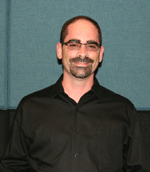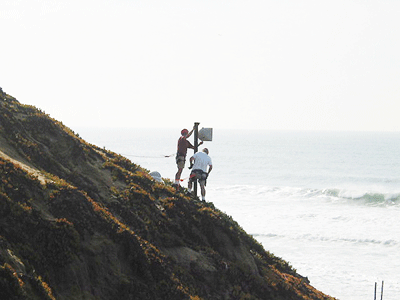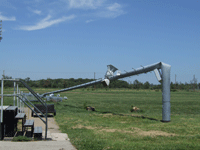How To Avoid The Top Pitfalls In Outdoor Sound

by John Loufik
The outdoor environment presents unique challenges to sound system designers and installers. There are great distances to cover. Wind and other weather conditions complicate controlling loudspeaker projection paths. Weather and wildlife make loudspeaker survivability a major factor in installations.
Underestimating the effects of weather on acoustic output and durability
In the outdoors, one must first accept that “Mother Nature” always wins and she is not friendly to high fidelity sound and loudspeaker components. System designers might be tempted to fight the elements with sheer acoustic brute force, but this may not always be the wisest approach. Let’s consider some challenges presented by the outdoor environment and practical methods that attempt to cooperate with the natural world rather than conquer it.
Begin with an assessment of all the weather dynamics that directly impact a given venue relative to the period of time that the system will be in use. Initially, evaluate the venue to learn what forces of nature will tend to re-direct or diminish loudspeaker output in ways that defeat the system’s design goals for the listening audience.

This carefully executed installation in Fletcher Cover, CA required specialized mounting provisions and extremely durable high-output R.5HP loudspeakers for voice warning announcements along the rugged shoreline.
The key environmental conditions to observe include: range of temperature, typical humidity, time of day (day vs. night), prevailing wind, elevation relative to neighboring properties, audience noise levels, and background noise levels. All of these factors influence sound propagation in any environment. Most of them become more pronounced and troubling for outdoor sound design.
Underestimating SPL losses and Excess Air Attenuation
Sound Attenuation over distance complicates things outdoors on two levels. First, the sheer distances involved in projecting across a large audience area require very high directivity to focus sound energy at the most distant listeners. Second, once sound has propagated over that audience, note that it will continue to propagate in accordance with the Inverse Square Law. So, if a given array of loudspeakers has generated enough SPL for the farthest listener, the sound will continue past them and only degrade by 6dB after the distance has doubled past the audience.
A daily selection of the top stories for AV integrators, resellers and consultants. Sign up below.
Is there anything to help us? Yes and No. Obviously, one might consider other loudspeaker positions and layouts. Maybe the system should be distributed to several locations where the speakers don’t have to operate so loud at the source. Consider “delay stacks” for a concert system or several lighting pole mounting locations for a sports field.
Excess Air Attenuation may be our saving grace, but only to a point. However, it may also be the limiting factor that complicates a system’s design. Note on the graph below that the air itself absorbs sound over distance in excess of the losses caused by Inverse Square Law. The effect is more dramatic at high frequency than at low frequency.
Underestimating the audio system’s impact on neighboring properties
Limitations imposed by the Inverse Square Law and Excess Attenuation are well illustrated in the case of an outdoor concert or a scoreboard mounted endzone sports sound system using high-output full-range loudspeakers.
Suppose that the initial projection distance measures 150 yards (equivalent to about 43dB of sound attenuation based solely on Inverse Square Law) and the target SPL for the audience is about 90dBC for a modestly loud modern music event. The sound propagation 150 yards beyond the audience will only degrade 6dB yielding a level of about 84dB. Consider what happens after the sound travels further again, doubling the distance again at 600 yards from the source – still 78dB. Now, what if there’s a residential area somewhere within this sound projection path? Did the system just violate a local noise ordinance?
Excess Air Attenuation helps as it will yield an increasingly “muffled” sound as the sound passes beyond the primary audience. Yet, bass frequencies do not degrade much at all in excess of the Inverse Square Law.
Meanwhile, the system must also project sufficient high frequency content over the expansive audience area. For a musical performance, this presents a real challenge as tones above 10kHz are diminished about 45dB or much more at 150yds! Can this be overcome by sheer brute force? Practically speaking, it’s very difficult. The problem does need to be addressed with any of the following: a flame throwing array of HF drivers, a distributed system that keeps the projection distances shorter, or just by tempering one’s expectations of the system’s frequency response at a long distance.
Loudspeaker aiming without regard for thermo clines
Temperature Gradients (Thermo clines) generate observable changes in frequency response as sound will “refract” or “bend” as it passes through variations in thermal layers in the air. Essentially, the speed of sound varies as the air medium varies in temperature which yields the refraction. Note that sound will always “bend” toward the cooler air mass. Most of the time, the cooler air is upward.
Near the surface, typically, the sod (or pavement) warms under solar radiation. Heat then conducts upward from the surface toward the cooler air above. Sound projected from a loudspeaker above the ground will then refract away from the line-of-sight aim point and actually be louder up in the air – often missing the intended target. This occurs more at higher frequencies. The solution? Aim a little steeper at an aim point slightly in front of the intended target and let the refraction “bend” the sound toward the audience.
This requires some trial and error and helps to have an assistant adjust the loudspeaker aiming while you evaluate (measure or listen to) the frequency response in the audience area. Be sure to do this under conditions that closely simulate the time and day that the system will be in use, as the refraction effect will vary throughout the day.

Though a massive tornado tore through Chapman, KS, knocking down utility poles on the football field of Chapman High School, the Community R-Series loudspeakers continued to work.
Insufficient Bass (limited boundary loading)
Insufficient Bass, in an outdoor loudspeaker system usually indicates an over anticipation of an individual loudspeaker’s ability to produce sound pressure in a free-field or half-space environment.
Indoors, low-frequency (especially subwoofer) loudspeakers benefit from the added reinforcement gained by nearby floors, walls, and ceilings. Additionally, other room boundaries generally cause sound reflections which propagate back toward the audience and add to overall bass levels (though some of it technically also cancels).
Outdoors, however, low-frequency drivers generally only benefit from any boundary loading if located directly on the ground or against some other very large surface. Many times, the loudspeakers are not near any boundary that contributes significantly to enhanced bass levels. So, the sound system designer must plan to supplement low-frequency largely based on “free-field” propagation principles.
Recall that in order to add 3dB to a sound system, either the electrical power applied must be doubled or the system transducer array must be doubled and fully powered. Depending on the SPL objectives and the Max SPL rating for the loudspeakers for a given system, one or both of those approaches will likely be appropriate.
As a general approach, identify subwoofers that exceed the Max SPL rating of the main loudspeakers by at least 3dB to 6dB. If such a subwoofer does not exist, then plan on increasing the subwoofer count accordingly until sufficient Max SPL levels will be attained. However, keep in mind how much bass can be tolerated by local ordinance!
Creating Real and Artificial Echoes
Reflections, Echoes, and Artificial Echoes can ruin any sound system design. Just as with indoor audio systems, care must be taken to avoid creating perceivable late sound arrivals that confuse the audience or the presenter. Outdoors, this problem magnifies greatly as the distances between reflective boundaries are often much greater than indoors. So, the resulting echo may exhibit a very long time lag yielding a very distracting sound (“late reflection”). Even a diffuse set of surfaces can reflect undesirable, fairly clear sound back to the listeners or presenter. Also, don’t be caught by surprise when a large boundary reflects sound toward an area where that sound is not wanted such as a nearby residential area. Obviously, the solution is to avoid aiming loudspeakers toward large surfaces.
Indoors, Artificial Echoes can be generated, but are usually less common except in larger indoor spaces where two sound sources are physically far enough apart that the audience member (or presenter) perceives the time-of-flight differential. The general rule of thumb frequently cited indicates that propagation time differences less than 35ms (approx. 39.5 feet) will generally sum in the listener’s mind – especially if one arrival is slightly lower in level. A shift in pitch or image position is possible, but the second (later) sound arrival will not interfere with intelligibility. This aspect of sound behavior can be exploited for outdoor sound systems where loudspeaker mounting positions must be spread out to several locations in a venue.
Unfortunately, this phenomenon is ignored and sound designers will place loudspeakers sources much further apart and aim them toward each other – even hundreds of feet apart! This generates a second, late sound arrival at many audience positions which sounds like an echo, but was generated artificially by a second loudspeaker. Many times there is no solution to this situation unless applying a signal delay to one of the loudspeakers can be done in a way that does not create other echoing effects, etc.
If you have been to many high school football stadiums or similar, you have likely encountered designs of this nature where loudspeakers have been located on lighting poles near the corners of the field – nearly 100yards apart… apart….. apart! Using the rule of thumb mentioned above this computes to 0.26 seconds! (feet / 1130 = seconds). Unless a listener resides directly between the loudspeaker sources or resides very close to just one of them, the second loudspeaker will likely be heard at a very high level and perceived as a very distracting echo. Better designs would locate the loudspeakers all in one consolidated “point source” array or to distribute loudspeakers to several positions being mindful of the ideal 39.5 foot maximum interval between loudspeaker sources.
My local football team has been plagued by a winless record this season (with only one game left to play) and a sound system of this “design”. I have delayed bringing this matter to the administration’s attention, as they clear need to focus first on winning some games! Who knows, maybe refitting the audio system may help them find some luck! Or, it may help at least sell more tickets.
The AVNetwork staff are storytellers focused on the professional audiovisual and technology industry. Their mission is to keep readers up-to-date on the latest AV/IT industry and product news, emerging trends, and inspiring installations.
